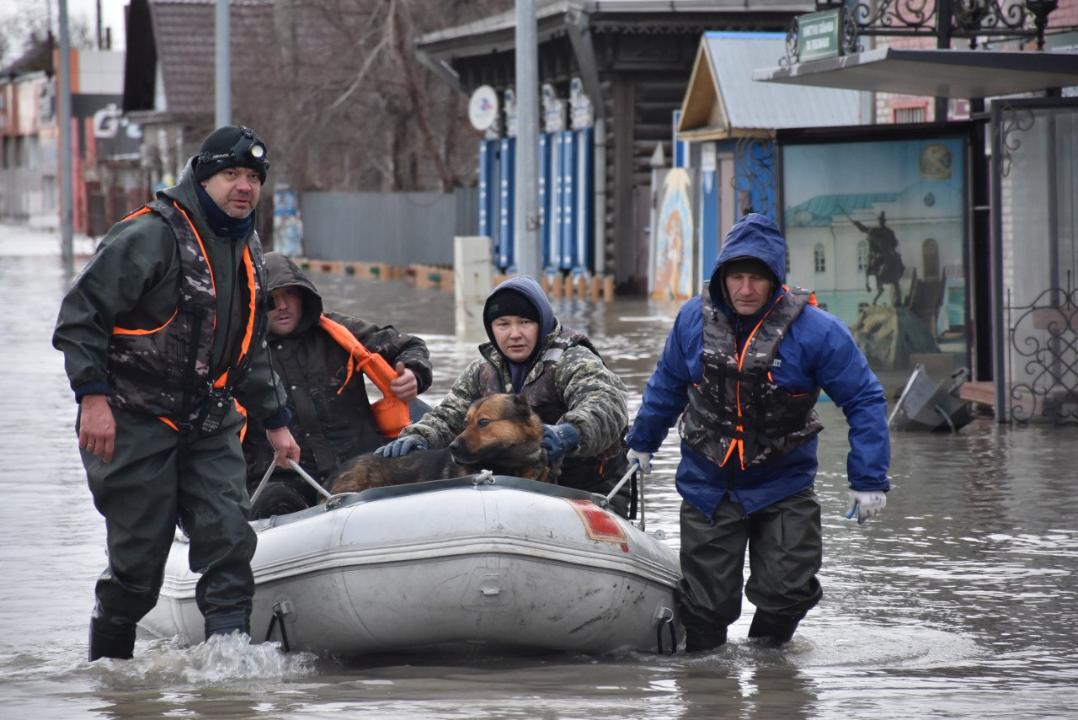ASTANA – In response to the devastating floods that have recently swept the regions of Kazakhstan, the government continues to roll out comprehensive measures aimed at assisting affected citizens and rebuilding the devastated areas.

Photo credit: Kazakh Ministry of Emergency Situations
The floods have significantly damaged infrastructure, homes, and farmland. Thousands of residents have been forced to evacuate as their homes are submerged under water.
Financial support
The Prime Minister’s press service reported that as of April 13, the Kazakh government had provided social assistance estimated at 555.4 million tenge ($1.2 million) to 2,300 families affected by the floods.
The government is also in the process of providing one-time payments worth 369,200 tenge ($822.26), pledging to compensate for lost or damaged property and offering deferments on loan payments.
Rebuilding housing
Floods impose long-term challenges as hundreds have witnessed their homes go underwater.
Flood victims will receive ready-made housing or have new housing built to replace those destroyed. Repairable housing will be financed by local government contractors or property owners themselves.
“The most important thing is compensation, which will be paid. Moreover, those who have lost their housing or need repairs will be allocated funds. We will purchase and provide apartments for those who wish to move. For those who want to stay where they are, we will build standard houses; however, under no circumstances should they remain in dangerous areas,” said President Kassym-Jomart Tokayev as he addressed the citizens affected by the floods in the Kostanai Region on April 16.
State and regional budgets will cover compensation for lost property and restoration work for small and medium-sized businesses.
Support for farmers
The agricultural sector, which has seen extensive flood damage, is a critical area of focus. The government will also cover the expenses for farm animals who died in the floods and offer further support to farmers and livestock owners by deferring loan payments and leasing obligations, as well as providing animal feed.
According to the Ministry of Agriculture, as of April 12, 102,000 heads of livestock have been evacuated to safe areas in the flood-affected regions. This includes 23,000 heads in the Kostanai Region, 22,000 in the Akmola Region, 20,000 each in the Aktobe and Atyrau regions, and 4,800 in the West Kazakhstan Region.
The commission tasked with calculating the compensation for damages confirmed that 6,800 heads of livestock have died as a result of the floods.
Rehabilitation
Sixteen sanatoriums and resort facilities will receive flood victims free of charge. They can accommodate up to 190 people at a time for rehabilitation courses lasting 10 to 14 days. The Federation of Trade Unions has allocated 164 places in seven sanatoriums for people coming from socially vulnerable groups.
Schools provide remote learning for evacuated children. Some have been relocated to summer camps, dormitories, or boarding schools, where educational activities are organized. Six hundred children have been accommodated in children’s health centers.
Prices of essential food products in affected regions are monitored daily. Business entities signed a few memorandums for the supply of 635,000 tons of vital goods, with 767 tons of social food products sold from stabilization fund reserves.
In regions under a state of emergency, targeted social assistance has been automatically assigned to 5,000 families, and disability review deadlines have been extended for nearly 4,000 individuals, including children, during the emergency period.
Kazakhstan has been battling the floods since the end of March. Since the flood began, 116,949 people have been rescued and evacuated, of which 40,781 are children, including 3,878 people. More than 112,000 farm animals have been driven to safe places.
As of April 17, 16,000 people have returned to their homes. There are 6,950 people in temporary accommodation centers, of which 3,113 are children.
On April 16, President Kassym-Jomart Tokayev visited the North Kazakhstan Region and the Kostanai Region. Both were significantly affected by the floods.


